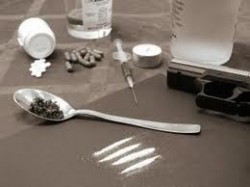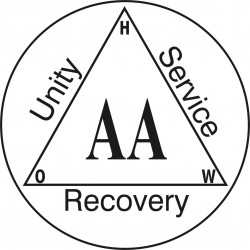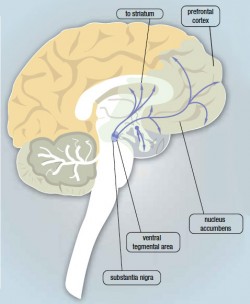Living with a loved one suffering from a substance abuse disorder may be one of the most difficult challenges anyone can face. Shame, fear, confusion, guilt, resentment, and indignation often permeate the home of substance abusers. In the quest to maintain peace, those who bear the greatest burdens are the ones who think that somehow, they can control what happens based on their own instincts and/or who the addict was before.
If this sounds like you, you are not alone. According to the National Institute on Drug Abuse, addiction, “is considered a brain disease because drugs change the brain—they change its structure and how it works. These brain changes can be long-lasting, and can lead to the harmful behaviors seen in people who abuse drugs.” Millions of individuals struggle with substance abuse and many substances abused in today’s society are powerful enough to get your loved one “hooked” after just a couple of exposures.
Lost Connections
Living with a loved one suffering from a substance abuse disorder brings down the moral of the home and within the family unity. The darkest sides of the problems that occur create atmospheres where isolation and crisis become the norm with all healthy communications getting lost in the turmoil. According to the Substance Abuse and Mental Health Administration Services (SAMHSA), “The idea of family implies an enduring involvement on an emotional level. Family members may disperse around the world, but still be connected emotionally and able to contribute to the dynamics of family functioning.”
Dealing with the health of loved one is one of the central roles that continue to bind loved ones together, but, it should come as no surprise if you have a loved one suffering from a substance abuse disorder, that the connections you once had with that individual will, at some point, be broken. The unrequited feelings when trying to sustain a relationship with a substance abuser can leave a deep, dark, and empty hole in the hearts of others that would otherwise, be unthinkable.
Characteristics of a Substance Abuser

Some signs of a substance abuser include denial and manipulation.
Addicts employ a wide range of defense mechanisms to limit detection of the severity of their substance abuse, to alleviate their own guilt and shame, and above all, to be able to continue using. According to the Institute of Medicine (US),”Drug abuse leads to reallocation of economic support away from the family; lack of participation in family activities, including caregiving; lack of emotional commitment and support for parents and children; and the inability to provide a reliable and adequate role model for other family members, especially children.”
Don’t be naïve. Some of the most commonly noticed characteristics of a substance abuser are:
- Denial
- Manipulations
- Loss of interest in once enjoyable activities
- Theft and borrowing of money or pawning items to buy drugs
- Staying away from the home to avoid confrontations
- Placing the welfare of themselves and their so-called “friends” above the importance of the relationships within the home
- Cognitive, emotional, and mental health problems – frequent outbursts of anger, depression, anxiety, restlessness, impulsivity, forgetfulness, distorted patterns of thinking, poor judgment, and inhibition loss
- Physical signs of distress and/or functioning impairments, insomnia, fatigue, and frequent bouts of sickness
Moving Forward
Losing an addict to overdose has become an epidemic problem in the young as well as the old and forcing the addict to become accountable for their substance abuse related problems can be as frightening to you as is to them. Too often, co-dependency gives way to the addict’s ability to manipulate the relationship for their own selfish gains. Preying on your fears for their wellbeing and ability to continue using while having you reorganize your life around their behaviors and mood is an experience no one wants to go through. The longer it continues the worse it will get.
According to the Substance Abuse and Mental Health Services Administration (SAMHSA), “An individual’s motivation to change can be strongly influenced by family, friends, emotions, and community support.” Providing support is great only if the substance abuser chooses to get help, but, the first thing you need to realize is that your support for them relies on your ability to take care of yourself. Education, insight, and hope are powerful motivators to living a healthy and satisfying life in those living with substance abusers, but, breaking the cycles of abuse, neglect, and pain can be difficult.
Finding Support
Joining a support group opens up opportunities to learn more about how to protect yourself and get more involved in helping your loved one. The people in these groups know the desperation that others go through when they have a loved one suffering from a substance abuse disorder and their one true objective is to be able to help in an honest and nonjudgmental way. Many resources are available to those living with a loved one suffering from a substance abuse disorder including Nar-Anon, Al-Anon and similar support groups that are specifically targeted towards the family members and loved ones of those who are addicted to drugs or alcohol.
Substance abuse during pregnancy is extremely dangerous and can lead to severe issues for both the pregnant person and the baby. Many people believe that there are safe amounts of drugs or alcohol that can be used when they are pregnant, but there is never any real way to know for sure if and how much the baby is being harmed by these substances until afterward.
Substances like drugs and alcohol can cause birth defects, obstetrical complications, and other issues that can endanger both parties. While these problems are completely preventable, it is very important to consider the effects of substance abuse during pregnancy.
Why is Substance Abuse and Pregnancy Such a Serious Issue?

It is important to avoid drugs, alcohol, and cigarettes (among other things) while pregnant, as they can significant harm your child.
Pregnant women are usually told by their doctors to abstain from any drug and alcohol use, especially illicit substances like heroin, meth, cocaine, etc. This is because there is no sure amount of a potentially harmful substance (like alcohol, drugs of abuse, etc.) that is proved safe for pregnant women to use without some type of risk. The risk includes the possibility for many complications, chief among them birth defects.
According to the SGV, “The risk of a birth defect for any baby is about four percent, regardless of the circumstances during pregnancy.” But introducing a teratogen into the pregnant individual’s system, that is a substance which can cause birth defects, makes the chances of birth defects occurring more likely in a way that could have easily been avoided.
Some women need to take medication during their pregnancies for conditions that must be controlled by a medicinal substance, but there is an extreme difference between substance abuse and required medication use. When a person becomes pregnant, it is always important to consult a doctor and consider a treatment program for a substance abuse problem that has so far gone untreated.
Problems Caused by Substance Abuse During Pregnancy
Any kind of recreational use of legal or illegal drugs or alcohol (or the use of more of a prescription substance than prescribed) is a form of substance abuse. During pregnancy, these substances which can always seriously harm you can also harm your child as they are able to cross through the placenta and into the fetus. There are many problems which can be caused by substance abuse during pregnancy to the point where birth defects and other issues can become common.
Smoking
According to the NLM, “Smoking during pregnancy passes nicotine and cancer-causing drugs to your baby.” It can also raise the risk of stillbirth or premature birth in your pregnancy because the fetus is not able to get the nourishment it needs to grow healthily.
The CDC states, “Some studies suggest a link between maternal smoking and cleft lip” as a possible birth defect that can occur from smoking during pregnancy. Low birth weight, sudden infant death syndrome or SIDS, and lung problems are all more likely to develop in children who are exposed to cigarette smoke through their mothers during pregnancy.
Alcohol
According to the OWH, “Pregnant women should not drink alcohol to eliminate the chance of giving birth to a baby with fetal alcohol spectrum disorder (FASD),” a range of issues that can vary from mild disorders to full-blown fetal alcohol syndrome. FAS not only entails learning, cognitive, and social issues later in life for the child but also facial abnormalities and growth problems.
While there are treatments that can be beneficial to children born with these disorders, “FASDs last a lifetime” and there is no cure (NLM). And because there is no absolutely agreed upon amount that women can drink without the risk of one of these disorders forming during her pregnancy, it is best to abstain from alcohol use and abuse altogether when pregnant.
Illicit and Prescription Substances
Illicit drugs like meth, cocaine, heroin, etc. are extremely harmful to both the pregnant woman and the child when abused, and women in the position of regular substance abuse are encouraged to seek treatment always and especially if they become pregnant. It is difficult to be sure what the exact possible medical results are for each individual substance when used during pregnancy, especially because many drug-abusing pregnant women are polydrug abusers as well as tobacco and alcohol users too. This can make it difficult to be sure which drug is causing which effect.
However, we do know some drugs may be linked with the following birth defects:
- Heroin: neonatal abstinence syndrome (withdrawal for the baby; treatable but without proper treatment can be deadly), glaucoma, spina bifida, congenital heart defects (CDC)
- Meth: high blood pressure in the fetus, prenatal stroke, low birth weight, withdrawal
- Cocaine: miscarriage, sensory stimulation issues, central nervous system problems that linger into childhood, intracranial hemorrhage (bleeding inside the brain) as a result of premature birth
- Marijuana: premature birth, low birth weight, attention issues and cognitive problems that may linger into childhood
It is also important to note that, with the abuse of illicit drugs, you cannot always be sure what you are putting into your body. The SGV states, “Drugs such as heroin and amphetamines are often mixed or ‘cut’ with unknown substances. These unknown substances can also be harmful to the pregnancy or fetus.”
In addition, the abuse of prescription substances can be just as dangerous. The recreational abuse of opioids during pregnancy can cause many of the same effects that heroin abuse can cause, and prescription stimulant, depressant, and other types of prescription drug abuse can also harm you and your child.
January is National Birth Defects Awareness Month, and understanding the risk for birth defects is important. However, knowing that there are ways that certain issues may be prevented with the act of abstaining from substance abuse of any kind during this time is essential to your knowledge of a safe and healthy pregnancy. By making this choice, you are working to actively protect your child from any harm that your substance abuse could do and ensuring a safer situation in which you can carry and deliver your child.
The 12 step process, according to the NIDA, is a group therapy model that “draws on the social support offered by peer discussion to help promote and sustain drug-free lifestyles.” Usually, the 12 step process is best used as a supplemental treatment, either before, after, or during formal rehabilitation. However, some people also use the 12 step process as their main treatment for substance abuse disorders.
What is the 12 Step Process?
The 12 step process is based on a treatment program that was originally used as a treatment for alcohol addiction. According to the NCJRS, 12 step programs are “based on a model of total abstinence.” They usually involve individuals becoming members of a mutual-help group and “certified counselors (often recovering addicts) conduct most of the group and individual counseling, with program staff providing consulting and resource backup as needed.” Often they will take place in a church, outreach center, or another type of community facility.
Patients will go through detoxification and a health assessment as part of most 12 step programs. Most of the treatments are based on social interactions and therapy in order to help patients work through their addictions and change their destructive behaviors.
Who Benefits Most from the 12 Step Process?
This treatment is most often used by “middle-class or working-class males with a high school education who do not have co-occurring psychiatric disorders.” There are also other self-help groups which employ the use of the 12 step process that are specifically created for certain groups of individuals like
- Women
- Teens and adolescents
- LGBTQ individuals
Generally, the individuals who benefit the most from the 12 step process are
- Those who feel comfortable with the process and its teachings
- Those who follow the rules and traditions to the best of their ability while being respectful of other individuals in the group
- Those who are comfortable discussing their feelings with a group
- Those who do not have polydrug or multiple substance addictions
- Those who do not have other mental disorders that are co-occurring with their addictions including:
- Generalized Anxiety Disorder
- Depression
- Bipolar disorder
- Schizophrenia
What are the 12 Steps Based On?

The 12-step program was created as a part of Alcoholics Anonymous.
The original 12 steps are based on those by the mutual-help group Alcoholics Anonymous. The steps begin with admitting that alcohol, or another substance, has come to create an extreme problem in your life and that you need help in order to become better. The steps also include admitting your mistakes, asking for forgiveness, making a list of those you’ve harmed, praying, and meditating. You can find all 12 steps as they are most commonly used at both the Alcoholics Anonymous and Narcotics Anonymous websites.
The 12 steps are meant to help individuals become totally abstinent from the substance to which they are addicted which, for some, is the only way that true recovery occurs. However, there are others who need to be maintained on medication in order to find their recoveries in the best way for them (including individuals on methadone maintenance who often stay on the treatment for a year or longer).
12 Step Programs Vs. Formal Addiction Rehab
In most cases, formal addiction rehab is necessary for the treatment of individuals with substance use disorders. Whether you attend rehab in an outpatient or an inpatient center, there are parts of formal treatment that are necessary for many people to recover. Medication is often very helpful to those who are addicted to substances like alcohol and opioids as it helps reduce cravings, curb withdrawal symptoms, and allow patients to focus on therapy.
Many patients also have co-occurring mental disorders that the 12 step process will not help with. These individuals need to attend formal addiction rehab, some in an inpatient facility where they can be monitored in a controlled environment. In these facilities, treatment for both addiction and other disorders can be done simultaneously which is much more beneficial to patients who suffer from both.
However, some people choose to only attend 12 step programs in order to treat their addictions to alcohol, drugs, and other substances. This type of treatment is not unheard of and can be favorable under certain circumstances. The NIAAA states, “Despite developments in medications and behavioral therapies, mutual-help groups remain the most commonly sought source of help for alcohol use disorders in the United States.”
Others may seek 12 step programs as a treatment for different substance abuse disorders as well, but using it as an exclusive treatment for addiction is not always the safest or best method as
- People often find the best recoveries with formal treatment and the use of medication and therapy together. According to the NIDA, “Medication and behavioral therapy, especially when combined, are important elements of an overall therapeutic process.”
- 12 step programs are usually best for those who have less severe addictions and have made a strong decision to stop abusing drugs for themselves and their loved ones.
- Addiction is a chronic disease, and relapse can occur after treatment, calling for the need for more treatment months or even years after their initial rehab session has finished. Even if someone uses the 12 step method successfully at first, there is always a possibility for relapse which may call for the use of formal addiction treatment.
The 12 Step Process as a Part of Addiction Recovery
12 step programs are best used as a supplement to formal treatment for most individuals. They help patients continue the lessons they learned in therapy and give them a social environment where they are able to surround themselves with others who want to see them recover and stay in treatment. If you need formal addiction treatment, it is important to attend it and often many individuals who do decide to attend a 12 step program afterwards.
However, this does not mean that all individuals follow this treatment model. Many do take on the 12 step process as their main treatment method. It all depends on knowing which treatment works best for you and being able to recognize what you need as an individual, a patient, and a recovering addict.
The Affordable Care Act and actions which have and will follow the law have both positive and negative effects on substance abuse treatment for those in need. Because “the ACA includes substance use disorders as one of the ten elements of essential health benefits,” there have been great leaps made toward helping more individuals receive treatment (ONDCP). But in some ways, there are impacts that show us we still have a long way to go.

More healthcare providers offering reimbursed services to addicts thanks to the Affordable Care Act.
Both Sides of the ACA
An article from Insurancenewsnet.com states that “ACA realities may have a detrimental impact on the number of people able to receive treatment.” While the goal is the opposite, there are indeed two sides to the ACA’s effect on substance abuse treatment. We must consider all of the places where the ACA has an impact on substance abuse treatment and whether or not more individuals are actually being treated. Then we can take the necessary steps to make even more changes.
Positive Aspects of the ACA Affecting Substance Abuse Treatment
There are still many positive aspects of the ACA that will help to affect substance abuse treatment. They are:
- “The new system covers more services for more people.”
- It states that “patients are entitled to mental health and substance abuse treatment without arbitrary or discriminatory limitations.”
- It keeps providers from denying coverage to those with preexisting conditions so someone who has had issues with abuse in the past will not be denied coverage. This is important as relapse is often part of recovery.
- It “further eliminates annual and lifetime limits on essential health benefits,” which is also very beneficial to those who have experienced relapse more than once.
- “More health care providers can offer and be reimbursed for these services” (ONDCP).
Many of these effects will be very beneficial to those who need treatment. However, other effects could be more negative.
Negative Aspects of the ACA Affecting Substance Abuse Treatment
Some of the negative aspects of the ACA and its policies are:
- Providers who cover more patients and do not see “a corresponding increase in their overall earnings” may decide not too take on more Medicare or Medicaid patients. These providers could “determine the government reimbursement rates to be too low” which is why they will not want to take on patients like these.
- Smaller facilities may not be able to take on the high amount of new patients and, therefore, will turn patients away.
- The types of treatments and prices for Medicaid programs are often left up to the state’s discretion which means that “predominant courses of treatment may thus vary significantly from one state to another.”
- Different states may have different reimbursement rates, and low reimbursement rates mean that insurance providers will be less likely to cover patients from whom they do not receive the kind of reimbursement necessary for treatment in an inpatient facility, which can be expensive.
The ACA has made many positive strides, but there is still a long way to go in order for those with substance use disorders to be able to receive all the treatments they need. With any luck, we can continue to improve upon the system.
The recent work done in Massachusetts, led by Gov. Deval Patrick, is making the National Drug Policy leaders pay attention to the state’s substance abuse policies. They are even considering the state to be a model for the future of NDP on a federal level. Because of the new ideas, laws, and practices being put forth in Massachusetts, we now have a new possible way to help more people struggling with substance abuse to receive treatment.

State drug policy model enacted by Massachusetts Governor Deval Patrick being considered on a federal level.
Laws and Policies in Massachusetts
Thanks to Gov. Patrick, a new law has been put into place that “requires insurers to pay for up to 14 days of inpatient care for those in need of acute treatment for addiction and forbids insurers from requiring prior authorization” (Masslive.com). With this bill now a law, it will be harder for insurance companies to turn away individuals who truly need treatment and easier for people who need treatment to receive it. Other requirements included in the law are:
- “A commission to prepare a list of drugs that can be substituted for opiates”
- A requirement for pharmacists to dispense these “abuse deterrent drugs” and for insurers to cover them
- The ability for the commissioner of public health to “classify a drug as dangerous for up to a year and impose certain restrictions on it” if it poses a threat to the safety of the public
- New requirements on different issues involved with drug abuse such as “the state’s prescription monitoring program,… drug overdose deaths,” and children who are born after being exposed to drugs.
These new requirements under the substance abuse law could go a long way toward helping those in the state find the treatment they need and possibly reduce the amount of substance abuse issues, hospitalizations, and deaths.
The Impact of the Law on a Federal Level
While this is good news for Massachusetts, it could also be great news for the country as a whole. U.S. Sen. Markey has expressed a interest in introducing a bill like Gov. Patrick’s to Congress. According to Masslive.com, Markey says, “When you invest in treatment for patients, in the long run, you save money in re-hospitalization, in readmission to prisons.”
Gov. Patrick even signed the new bill on the same day as a “gathering of some of the nation’s top drug policy officials.” Michael Botticelli, the director of the ONDCP and an attendee of the gathering, spoke well of the efforts in Massachusetts, saying that the state “in terms of the work that has already happened, and by passing the bill today, will continue to promote the good work that’s happening here nationally.”
Although insurance companies will continue to fight legislation of this kind, stating that the 14 days should not be a model for treatment and that “there’s no medical evidence to suggest this is the correct treatment for opioid addiction,” it is still a victory. Yes, it is stated that treatment which “lasts for less than 90 days is of limited effectiveness” (NIDA), but this in no way means that we should not try. Massachusetts is working toward better policies and better care for those who are struggling with substance abuse, and the nation is looking to them as a model for future legislation.
Substance abuse treatment is often necessary for those who are experiencing real problems in their lives due to abuse of and addiction to drugs. But what types of treatment are necessary? And how does a person choose which substance abuse treatment he or she needs?

Seeking support requires careful consideration and care.
The Most Important Aspect of Choosing Treatment
If you remember one thing about choosing a substance abuse treatment, it should be this: “no single treatment is appropriate for everyone” (NIDA). This is so important to remember because it informs why the choice of a certain substance abuse treatment is a large part of successful rehabilitation. It also allows patients to reexamine their treatment plans after their needs begin to change. Every treatment plan should cater to the needs of the individual. This is why one person may find successful recovery from addiction to one substance through outpatient care, but another person may need residential care for the same substance addiction. The treatment you choose should reflect your needs. Consider these questions:
- Do I need a controlled environment?
- Will my children be with safe and taken care of if I need to choose residential treatment?
- Do I have a strong support system of friends and family who can help me through this time?
- Am I able to pay for the treatment plan I need?
- Will I need after care or further help following formal treatment?
After asking yourself these questions, and more, you will be able to get a more accurate idea of what you need in your treatment plan.
Residential Treatment
Residential or inpatient treatment is often very beneficial to many patients’ recoveries. Patients who need round-the-clock surveillance in a controlled environment should consider residential treatment. Because this treatment plan can sometimes be expensive, there are different types of residential treatment facilities, such as:
- Private and/or luxury residential treatments which cost the most but may be necessary for someone who can pay and is especially concerned about his or her privacy
- Low-cost residential treatment or sliding fee scale residential treatment
- Free residential treatment which, according to SAMHSA, make up 4% of all substance abuse treatment facilities
The treatment types that are usually provided in these facilities are most likely a combination of medication and behavioral therapy. These two treatments, especially when used together, are the most effective at helping patients through the beginning stages of rehab and recovery.
Outpatient Treatment
Outpatient treatment facilities usually provide the same types of treatment (therapy and medication) while allowing patients to still live their daily lives as they are being treated. A study from the NCBI states the reasons why a person might benefit more from outpatient treatment. These patients are:
- Those with “low psychiatric severity”
- Those with a “good social support system”
- Those who are addicted to drugs with less severe withdrawal symptoms
If this type of treatment is the right type for you, it may help you not incur the costs of inpatient treatment, as outpatient treatment facilities tend to be cheaper.
There are other types of informal treatments, aftercare options, and mutual-help groups which may help you as you continue your recovery. Make sure to choose whichever type of facility and treatment meets your needs when you are considering substance abuse treatment.
There are many issues that have been linked to marijuana use and abuse, but a recent study has shown that regular marijuana use can actually be linked to impairments in the brain’s reward center. Because of marijuana use, many people have problems feeling positive effects and are sometimes more affected by negative effects and stimuli like stress. A new study is helping us understand why.

Marijuana use linked to dopamine pathway changes
How Marijuana Effects the Brain and Its Chemicals
When an individual smokes marijuana, the drug is absorbed and affects the brain more quickly than when it is ingested another way. The THC chemical in marijuana reacts with cannabinoid receptors that are in the brain. According to the NIDA, the endocannabinoid system (of which cannabinoid receptors are a part) “plays an important role in normal brain development and function.”
The NIDA goes on to state that “the highest density of cannabinoid receptors is found in parts of the brain that influence pleasure, memory, thinking, concentration, sensory and time perception, and coordinated movement.” Because “marijuana overactivates the endocannabinoid system,” issues may begin to occur here as a result of marijuana use.
Marijuana’s Effect on the Brain’s Response to Dopamine
While marijuana can provide someone with a temporary high, there are also issues with the way regular marijuana use changes brain functions, actually making a person more tense and less able to experience positive emotions.
Dopamine is a chemical which is, among its other functions, involved in the brain’s reward system. It is a natural chemical that human beings need for many functions. Unfortunately, new research states that “regular marijuana users show impairments in the brain’s ability to respond to dopamine” (NIDA). Because dopamine has many functions in the human body, this is a major issue that may occur due to the overuse of marijuana. It also explains many of the other issues that individuals have when they smoke marijuana regularly, which could be very important to our knowledge of marijuana use.
Psychological Effects of Marijuana Use
According to the NIDA, “regular marijuana users are more prone towards depression, anxiety, irritability, and increased sensitivity to stress” (NIDA 2). We were unable to understand exactly why these issues occurred before, but now that we are beginning to understand marijuana’s effects on the brain’s response to dopamine, the reason for the link is becoming clearer.
The study itself states that “marijuana abusers show lower positive and higher negative emotionality scores than controls” which connects to the lower amount of sensitivity to rewards and the higher amount of reactions to stress that have been associated with regular marijuana use (PNAS). This research is not entirely conclusive as it
- “Can’t determine if regular marijuana use causes deficits in brain reward centers”
- Can’t determine whether or not the reason these users are taking marijuana is to “compensate for less reactive dopamine systems”
but there does seem to be a link between the two issues. The low reaction to dopamine that many regular marijuana users exhibit does help to explain the increase in stress sensitivity and irritability and decrease in reward sensitivity. Further research will be needed to make these findings clearer, but we now understand that regular marijuana users do show a significant impairment in their brains’ reactiveness to dopamine.
Teenagers often function on little sleep: they wake up early for classes and stay up late every night, sometimes studying, sometimes partying, and sometimes spending hours on the Internet. But the lack of sleep teenagers get is dangerous for them in many ways, especially when it increases the risk of substance abuse.

Teen substance abuse linked to sleep deprivation.
Teenagers and Sleep
According to a study from the NCBI, teenagers actually “need more sleep because they are in a time of very fast physical, intellectual and emotional growth.” Even though high school begins early and many teens enjoy staying up late, teens actually “need between 9 hours and 10 hours of sleep every day” to function at their best. Many teenagers do not know that they actually need more sleep than adults or children do, and they often wind up getting less than either one.
The Effects of Sleep Deprivation on Teenagers
Steven G Liga, executive director of NCAAD of Middlesex County, states that “chronic lack of sleep can affect mood in significant ways.” Losing sleep or not sleeping enough every night can cause a teenager to feel:
- Irritable
- Angry
- Sad
- Overwhelmed
These mood disturbances can be very problematic, but most teens will experience the symptom of being extremely tired all the time. Whether that means falling asleep in class or slugging through the entire day, this can be a real issue. But the effects of a teenagers’ lack of sleep do not end here.
The Link Between Lack of Sleep and Substance Abuse
Teens who go without sleep actually have a higher risk of substance abuse. What’s an adolescent to do when his or her body is begging for sleep, but schedules do not allow it? Unfortunately, many teens combat this by taking stimulants.
Teenagers will often turn to substances like caffeine in order to have the energy to stay out late with friends after being at school all day. Many teens will drink several energy drinks a day in order to stay awake and alert. These products are much more intense than soda and coffee and can be detrimental to a teenager’s health.
Some teens can wind up “too wired from excess caffeine” and “are too on edge to actually sleep even when they want to” according to recent surveys. This causes even bigger problems like abuse of sleeping pills and benzodiazepines such as Valium. Both are commonly used so that the teen can crash and finally get some sleep. Then, he or she might begin taking prescription stimulants like Ritalin to wake up again. Binge-crash patterns like this quickly create addictive habits in those who abuse prescription drugs or other substances.
This pattern is not a surprising one when we consider what effect insomnia has on individuals. Another NCBI study states that “a history of insomnia” can predict “other psychiatric disorders” which include alcohol, drug, and nicotine abuse. Teenagers will usually choose fun over sleep if they can help it, and because their schedules are chock-full, they often turn to drugs to help them through, not realizing the intensity of the issue. Many teenagers begin abusing stimulants and other drugs in an attempt to control their sleep schedules, and this will only lead to further problems. Real changes should be made in the way teens are scheduled in order to help prevent this chronic lack of sleep.